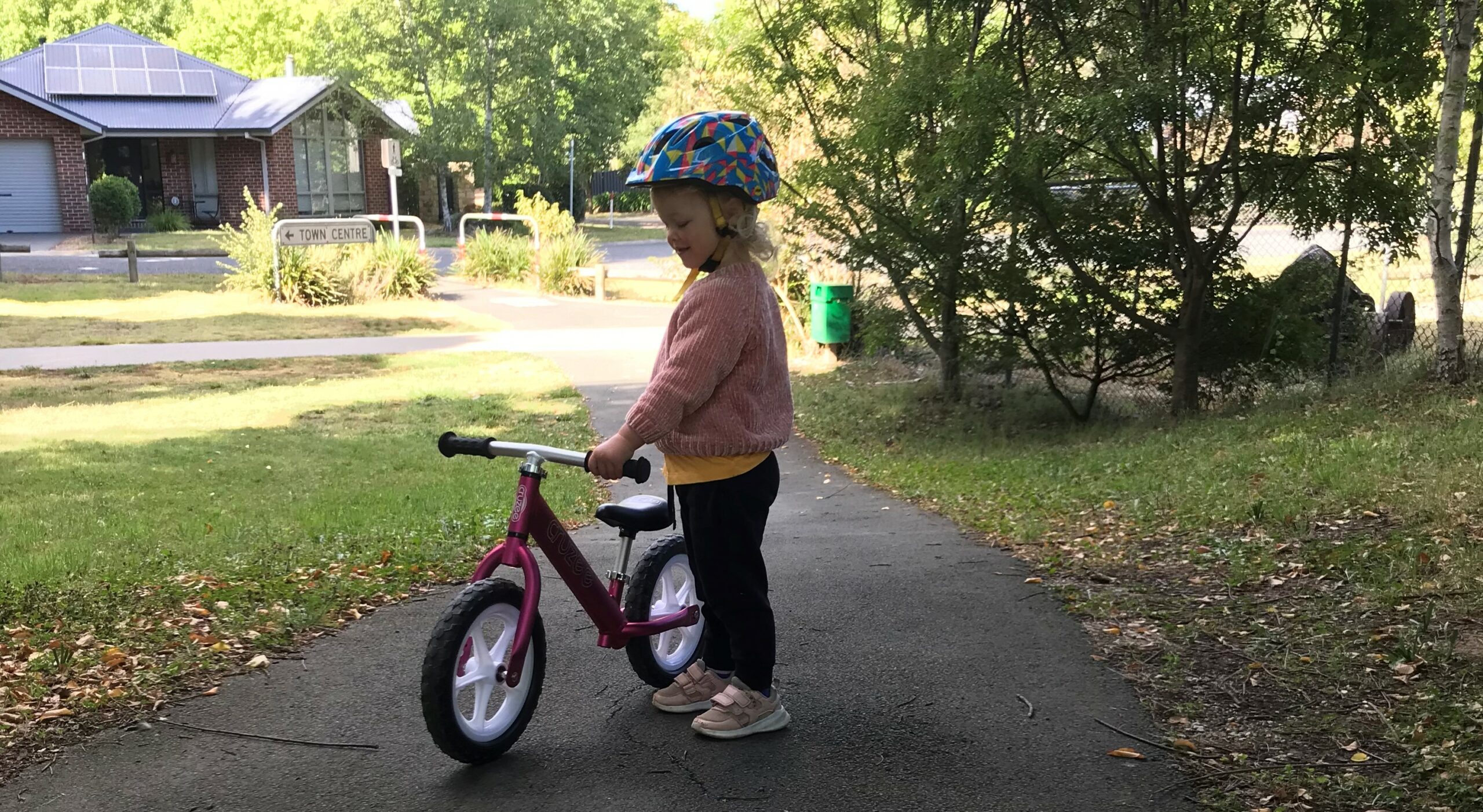
Training wheels have been the principle means of learning how to ride a bike for generations, but are they the best way to teach your child how to ride a bike?
If your unsure of the answer to this question, we are here to help.
Learning to ride a bike has been revolutionized by the introduction of what we like to call, a developmental powerhouse on two wheels, the kids balance bike.
These little toys have been around since 1997, when German designer Rolf Mertens launched the first commercially available kids balance bike and ever since, these little bikes have been taking the world by storm.
By teaching balance, coordination and essential bike riding skills at an early age, balance bikes are fast becoming the go-to option for parents wanting to introduce their little riders to the world of cycling the right way.
In this article, we will unpack why balance bikes are safer, easier, more effective and super fun as we explore 10 key reasons why balance bikes are the best way for kids to learn how to ride a bike.
We now invite you to now sit back with your favorite means of hydration (we recommend an Almond Latte) and enjoy our latest post that explores why balance bikes are the best way to learn how to ride a bike.
Enjoy!
Affiliate disclosure time: Some of the links on this page are affiliate links. If you click on those links and make a purchase within a time frame, we earn a small commission. Rest assured, the commission is paid by the retailers, not by you.
This commission helps keep ilovetoridemybike.com riding and writing. We thank you for your generous support. You are helping us continue doing what we love and that’s providing our customers with all the information they need to know about balance bikes for kids.
10 Reasons Why Balance Bikes are the Best Way to Learn How to Ride a Bike
1. They teach balance
Their name is a dead giveaway and perfectly appropriate for their aim and purpose.
Balance bikes have ultimately been developed to teach the essential bike riding skill prior to attempting to ride a pedal bike.
Namely, balance!
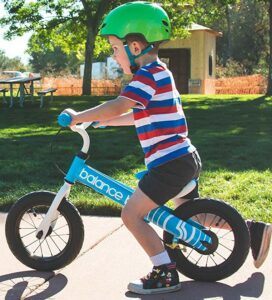 Unlike tricycles, balance bikes allow the rider to develop balance as they progressively walk, jog, run and in particular, glide along on these wonderful little toys. The motor patterns intuitive to developing balance, cannot be developed using training wheels, as these teach children to lean the wrong way to steer, fostering incorrect bike riding skills.
Unlike tricycles, balance bikes allow the rider to develop balance as they progressively walk, jog, run and in particular, glide along on these wonderful little toys. The motor patterns intuitive to developing balance, cannot be developed using training wheels, as these teach children to lean the wrong way to steer, fostering incorrect bike riding skills.
Balance bike’s gently, almost majestically develop the correct skills, including balance in a fun, safe and easy method.
2. They teach coordination
Balance bikes have a wonderful capability to foster rider coordination that tricycles or bikes with training wheels are simply unable to match. But exactly what does this mean?
Coordinated movements look smooth and controlled. Picture any athlete performing their well-trained skill or movement at the Olympics.
When it comes to riding a bike, this coordinated movement allows a rider to seamlessly ride with appropriate speed, direction, timing and muscular control. Basically, riding looks simple and effortless.
Each time your child hops onto their balance bike, they will be developing stronger motor patterns, developing greater control and effortless coordination that allows them to simply ride better with less effort.
Tricycles or bikes with training wheels are counter intuitive to learning the essential skills necessary for riding a pedal bike, including the coordination to balance, steer and control a bike’s movement in a controlled, synergistic motion.
Balance bikes on the other hand, magically foster the right coordinated motor patterns.
3. They build strength
Riding a balance bike, even at such an early age, helps a rider to develop function in their lower bodies and in particular, strengthens the muscles of the legs without placing any stress on their growing joints.
The non-weight bearing nature of riding a bike is dynamite for building strength, particularly to the large muscle groups including the quadriceps, hamstrings, glutes and calves.
Balance bike’s, by allowing kids to use those big muscle groups on a bike by firstly walking, jogging and eventually running will be gaining what is known as an accumulative training effect.
That is, muscle strength and endurance love to be developed progressively, without big advances in overload and in doing so, over time can become stronger and more efficient at performing a task, like riding a bike.
Tricycles or bikes with training wheels don’t allow the same range of movement as a balance bike, nor do they encourage the core muscle groups (the group of muscles located in the abdomen, pelvis and lower back) to become switched on.
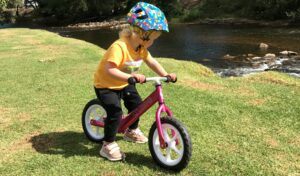
Basically, this essential group of muscles required for stability, support and balance are not getting the workout they need on a tricycle. A balance bikes on the other hand, promotes and enhances the stimulation of these muscles and helps train them to work in harmony to support the body as your little rider is learning to ride a balance bike.
Another wonderful win-win!
4. They’re easier to use

These little developmental powerhouses’, aka balance bike’s, are designed to make learning to ride simple. Balance bikes are tiny and ultra-light, the lightest weighing just 1.9kgs (see the Cruzee 12″ and the Vitus Nippy 10″ for example).
The intentional super light design allows for ease of maneuverability, control and speed as little rider’s learn to ride the right way.
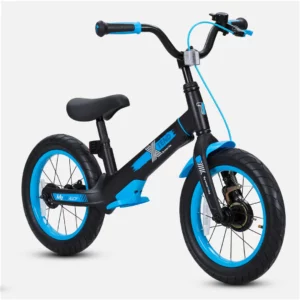 Most balance bike designs also feature what is called a low step-through frame. This is where the top tube of the bike angles down from the head tube, all the way down to the bottom bracket and allows small toddlers to easily mount and dismount their bike’s (see image).
Most balance bike designs also feature what is called a low step-through frame. This is where the top tube of the bike angles down from the head tube, all the way down to the bottom bracket and allows small toddlers to easily mount and dismount their bike’s (see image).
You can find some great examples of this low step-through frame on the Strider 12 Sport, Woom 1, GOMO, Banana Bike GT, Kriddo, and Vuly to name just a few.
5. Balance bikes are safer
As just mentioned, balance bikes are tiny. The intentionally small, step-through frame and super low seat height keeps the rider very close to the ground, reducing the distance of a potential fall.
In addition, balance bike speeds are controlled by the child’s feet, either for acceleration (unless on a slope) or braking. This gives the rider confidence and reassurance in knowing that their feet can touch the ground at any time while riding to allow continuous monitoring of how fast they are moving.
Essentially, unless on hilly terrain, children should generally feel well in control of their speeds and better yet, confident in learning how to ride a bike at a pace that suits their unique abilities.
6. Balance bike’s make physical activity fun
Can you remember your first bike riding experience?
Most of us can. My personal first memories involved a heavy bike, a lemon tree in our backyard and tears the size of lemons. Not pleasant, but nonetheless memorable.
Fortunately for toddlers today there is a better way for them to be introduced to the wonderful world of bike riding, a balance bike. When a child, and even for us adults, is learning a new skill or activity that is just good old plain fun, provides you with a bucket load of encouragement to stick at it and continue to learn.
Having a shiny new toy in the garage that stimulates your senses, challenges you both physically and mentally and introduces you to new and varied experiences is relatively easy to use day in and day out. One of the huge advantages of a balance bike being fun, and let’s face it, kind of cool is that it makes physical activity fun too.
Riding a bike is one of the best forms of physical activity available and by introducing your child to a balance bike at a very young age, even younger than what a tricycle can, you are fostering a love of physical activity, the great outdoors and engendering a lifetime passion for a healthy and active lifestyle.
Balance bikes have the advantage over tricycles in that kids are able to begin learning to ride as soon as they are taking their first steps. The key point is this; the earlier you can encourage your child to enjoy physical activity, the more likely they are to establish healthy habits for life.
Now that’s a wonderful advantage!
7. They encourage independence and confidence
The toddler years are amazingly important for a child’s overall development. This elevates the importance of any activity introduced to your child during these formative years, and highlights why a balance bike that is introduced to your child at such an early age is such a powerful developmental tool.
Learning to ride a bike, especially during s child’s formative years, nurtures a child’s independence as they can begin to explore the world around them on two wheels, gaining a sense of control and confidence that is new and exciting.
 A balance bike gently but correctly encourages a new level of independence for getting around, visiting parks and playgrounds and seeing new and exciting places in your local area. This sense of autonomy and success at learning a new skill brings with it a bucket load of confidence that permeates all areas of a child’s development.
A balance bike gently but correctly encourages a new level of independence for getting around, visiting parks and playgrounds and seeing new and exciting places in your local area. This sense of autonomy and success at learning a new skill brings with it a bucket load of confidence that permeates all areas of a child’s development.
Bottom line, as children learn to master balance, coordination and motor control on a bike, they will become more confident and motivated to not only continue but attempt other new and exciting activities in future.
The ease of learning created by a balance bike, above and beyond that which a tricycle can provide, is another positive advantage for kids as they learn to ride on these shiny little toys.
8. Balance bikes provide a smooth transition to pedal bike’s
This is a biggy and is directly related to our first point mentioned in this article.
As mentioned previously, balance bikes have been designed to allow kids to develop balance on a bike. But why is this important when learning how to ride?
Great question. The simple answer is this, the most difficult skill to master when learning to ride is being able to maintain balance on your bike. Not to mention, learning to balance a bike while attempting to pedal, control your speed using a brake, steer and of course wave at your mum and dad as they cheer you on.
Yes, there is a lot going on when your brain is trying to synergize these complex skills when you’re a toddler. A balance bike simplifies the process beautifully.
If a child is first able to master balance, especially from a very young age, these other essential bike riding skills become a breeze as it’s relatively straight forward for a child to apply pressure to some pedals to provide forward movement.
A balance bike, unlike tricycles and training wheels provides a smooth transition to a pedal bike when your child is ready. There is simply no need for training wheels when teaching kids how to ride a bike. Period!
9. Balance bikes are low maintenance and easily adjustable
Another huge benefit of these wonderful little toys is that they are super low maintenance.
As an avid rider, I can attest for the continual upkeep of any bike that has a drive train, chain, gears and cranks. A balance bike has none of these, just a super small frame, handlebars and wheels.
This makes their maintenance very quick and very easy, unlike bikes with training wheels.
If you would like to learn more about how to maintain your child’s balance bike check out our post, Balance Bike – Maintenance and Care.
In addition, balance bikes are designed to have a high degree of adjustability. Most in fact, will have quick release clamps allowing you to easily adjust the seat and handlebar height. Some may require a tool, however there is usually a wide range of adjustment available for these key metrics as your little champion grows like a mushroom.
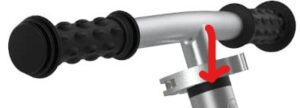
Some better balance bikes on the market with a huge range of adjustability in seat and handlebar height include the Cruzee, Strider 12 Sport, GOMO, Woom 1, Banana GT, Kriddo, Lava Sport, Trek Kickster, and FirstBike Cross.
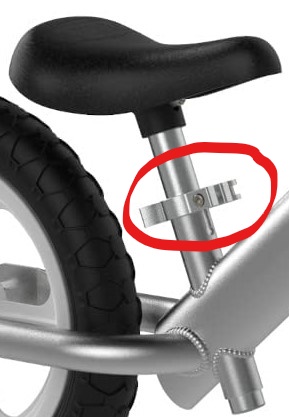
10. They are practical
For anyone out there who has experience with toddlers, you will be well versed with your child’s on/off switch and the closely related yet arguably the ultimate behavioral extreme, the melt down. Yikes!
If, or more likely when your little riding champion has decided to pack it in for the day, it’s super helpful to be able to carry something that is light and tiny, allowing you to pop this in the car, bike buggy or even attach to your back pack (yep this is possible with a balance bike) as you quickly administer some tasty treat or drink to your wailing child.
A balance bike, with no training wheels, drive train, cranks and pedals, are quite simply the lightest bike’s available in the world to carry when needed. Some, like the Micro Deluxe even have an inbuilt carry handle designed into the frames top tube for this very purpose. Very nice!
Overall ilovetoridemybike.com Conclusion
Thank you for taking the time to commit to helping become just that little bit better informed of the wonderful world of balance bikes for kids. Your little rider/s will undoubtedly thank you in future as you provide them with the encouragement and support needed to learn how to ride a bike.
We hope that you feel empowered and knowledgeable after reading our post which has provided you with why balance bikes are superior when it comes to teaching your little gem how to ride.
Here’s a quick re-cap for you. We provided you with 10 reasons why a balance bike is the best way to learn how to ride a bike including;
- They teach balance
- They teach coordination
- They build strength
- They’re easier to use
- Balance bike’s are safer
- Balance bike’s make physical activity fun
- They encourage independence and confidence
- Balance bike’s provide a smooth transition to pedal bike’s
- Balance bike’s are low maintenance and easily adjustable, and
- They are practical to use
If you would like to learn more about some highly recommended balance bike’s available head over to one of our product reviews, including the Cruzee Ultralight, GOMO, Firstbike Cross, Banana Bike GT and LT, or Specialized Hotwalk to name just a few.
In addition, if you would like to learn more about how to teach your child how to ride a balance bike and make the transition to a pedal bike, check out our posts, How to Teach Your Child How to Ride a Bike Part I and Part II. We are sure you will find these most helpful.
If you have any questions or comments about this post, or anything to do with the wonderful world of kids balance bike’s please leave these below.
Until next time, happy riding!
